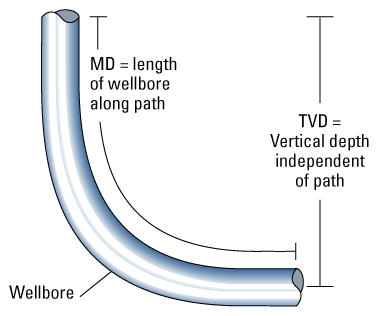1. n. [Drilling]
The vertical distance from a point in the well (usually the current or final depth) to a point at the surface, usually the elevation of the rotary kelly bushing (RKB). This is one of two primary depth measurements used by the drillers, the other being measured depth. TVD is important in determining bottomhole pressures, which are caused in part by the hydrostatic head of fluid in the wellbore. For this calculation, measured depth is irrelevant and TVD must be used. For most other operations, the driller is interested in the length of the hole or how much pipe will fit into the hole. For those measurements, measured depth, not TVD, is used. While the drilling crew should be careful to designate which measurement they are referring to, if no designation is used, they are usually referring to measured depth. Note that measured depth, due to intentional or unintentional curves in the wellbore, is always longer than true vertical depth.
Alternate Form: true vertical depth (TVD)
See related terms: bottomhole pressure, hydrostatic head, hydrostatic pressure, kelly bushing, measured depth
